Zeroing in on zoysia
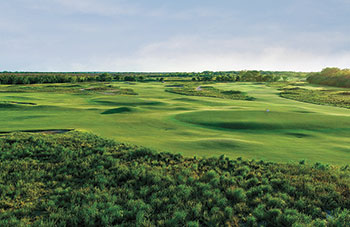
Initially, it was thought that zoysia’s lush look and environmental advantages would make it the go-to turfgrass for golf courses. Trinity Forest Golf Club, pictured here, went with zoysia and has hosted the AT&T Byron Nelson for the last two years to rave reviews. (Photo: Trinity Forest Golf Club)
By all measures, 2016 had a lot of impact on America. There was the election, the Zika virus, President Obama’s visit to Cuba and, more relevant to these pages, the summer Olympics in Rio de Janeiro and golf’s return to the games after a 112-year absence.
We know how the golf chapter of this story goes. Gil Hanse was tapped to design the Olympic Golf Course. Zeon Zoysia from Bladerunner Farms in Poteet, Texas, was selected as the turfgrass for fairways and greens. Then — boom — this spunky species with thick blades, lush looks and much-discussed environmental upside was all the rage.
In fact, a 2016 Golfdom online post from the Golf Industry Show noted that pundits were predicting 2016 would be “the year of zoysia.” Along with the Olympic Golf Course, high-profile venues such as Bluejack National outside Houston, Trinity Forest in Dallas and The Golf Club of Texas in San Antonio all rolled out zoysia playing surfaces. The latter went all-in, with three different strands on tees, fairways and greens.
Zoysia again received some love during the 2019 PGA Championship at Bellerive Country Club in St. Louis. The players loved it, with Rickie Fowler and Gary Woodland both paying their respects. Rees Jones, who renovated Bellerive in 2007, told Golf Magazine that playing a hybrid off the course’s zoysia fairways is as “easy as pie.”

Photo: Kasey Kauff
But as we round the dogleg toward 2020, has zoysia been able to continue its momentum and exponentially increase market share in the proverbially tricky Transition Zone? And has it been able to expand into semitropical regions where Bermuda still reigns supreme?
The answers, according to the data, are “no” and “no.”
Economics … and perception
According to the Golf Course Superintendents Association of America (GCSAA), zoysia is planted on only 8 percent of the potential golf course acreage in this sweeping region that spans from the Midwest and Southwest to the Southeast and Mid-Atlantic. The reasons for the paucity of the “Big Z,” as with so many things in golf and life, boil down to economics.
“Zoysia is an amazing grass, but you don’t find many owners or membership boards willing to kill off all the Bermuda on their golf course and replace it with zoysia,” says former superintendent Mark Semm, now a strategic account manager with BASF. “There has to be a return on investment, and bunker and clubhouse renovations are much easier to quantify.”
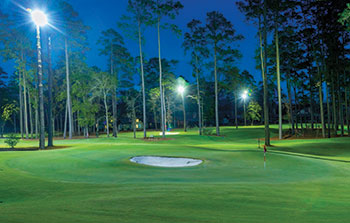
Zoysia is only planted on 8 percent of golf course acreage. Bluejack National, a Tiger Woods-designed course, is part of that small group. (Photo: Bladerunner Farms)
Prior to joining BASF to lead its Pinehurst Experience, Semm was head superintendent at Cordillera Ranch in Boerne, Texas. Home to PGA Tour star Jimmy Walker and country music legend George Strait, Cordillera was one of the first courses to sport Zeon Zoysia on tees and fairways. It’s widely regarded as one of the best layouts in the state.
“The members absolutely loved it,” Semm says. “But I think it is a niche grass that really appeals to high-end clubs that can afford to install it (and) with members who appreciate the playability advantages.”
Texas, with its mercurial swings of the mercury, has emerged as a zoysia hotbed over the past decade. Especially Dallas, which can experience 30- to 40-degree temperature fluctuations in the same week. According to Kasey Kauff, director of grounds at Trinity Forest Golf Club, perception plays as big a role as economics.
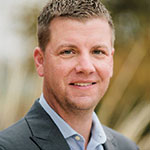
Photo: Mark Semm
“Many people think zoysia is more expensive and the upfront cost is much higher than Bermuda,” Kauff says. “The cost of sodding zoysia versus Bermuda is not even close. They also think zoysia is more expensive to maintain because of the fungicides needed to prevent large patch.”
Kauff says that because his course mows only twice a week — and because zoysia requires significantly less fertilizer — Trinity Forest spends less money than it would on maintaining Bermuda. This despite the application of fungicide for large patch four times annually. Maintenance budgets notwithstanding, Kauff believes zoysia appeals to high-end facilities that want to stand out.
“Planting Bermuda doesn’t make your club any different from any other,” he adds.
The zone of opportunity
Cole Thompson, an assistant director at the USGA’s Green Section, agrees that upfront costs and establishment are the biggest barriers to zoysia breaking out of its niche. Moreover, zoysia’s benefits decrease in warmer regions.
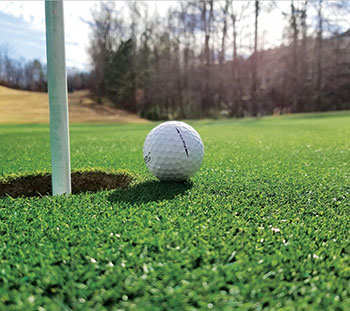
It’s predicted that zoysia use on greens may catch on over the next several years. (Photo: Bladerunner Farms)
“The current niches for zoysia are where winter temperatures or shade preclude the use of Bermuda,” Thompson says. “The more common scenario for a zoysia-based renovation is when a golf course decides to replace a cool-season grass in a climate too cold for Bermuda.”
This zone of opportunity extends well into the western United States in addition to the Midwest and Mid-Atlantic. Breeding for even more cold tolerance in zoysia has an added side benefit, according to Thompson.
“Some zoysia grasses tend to have better green color retention during the winter in the West, potentially limiting the need for overseeding,” he says. “Many breeders are currently working to improve the winter color retention of both Bermuda and zoysia.”
David Doguet, president of Bladerunner Farms, is one of zoysia’s most ardent advocates and groundbreaking pioneers. In January 2019, Bladerunner celebrated the announcement of zoysia’s deployment at seven golf course projects in seven different locations around the world. Doguet agrees that market share significantly trails other turfgrasses. But he has a different theory as to why.
“So far, production is not keeping up with demand,” Doguet says. “Therefore, use fluctuates, depending on availability. We are working on that by licensing key sod producers known for growing high-quality turf for golf around the world.”
An emerging change agent?

Photo: Cole Thompson
Any way you slice it, zoysia has its work cut out for it to gain a bust on the Mount Rushmore of turfgrass. Some industry insiders note, however, that new and emerging zoysia strands for putting surfaces could become a legitimate change agent.
“We will see a lot more zoysia greens going in as sod and sprig production acres increase,” Doguet says. “It takes time to get a new grass into the marketplace. The greens that are out there are doing a great job.”
Thompson sees an opportunity for new courses or those undergoing renovations that want to regrass greens with an ultra-dwarf bermuda but are too far north to take the gamble.
“Breeders are working to improve the texture and quality of zoysia for putting green heights of cut,” he says. “Widespread use is years away, but I do believe you’ll begin to see some adopt zoysia on putting greens.”
Trinity Forest has hosted the PGA Tour’s AT&T Byron Nelson since 2018, and feedback from players and caddies has been overwhelmingly positive. Kauff believes more options for zoysia greens would simplify the turf selection process and lead to more overall market share.
“Zoysia greens that putt at a championship level will be a game-changer, for sure,” Kauff says. “Courses could plant the same grass through the green. That would be a huge deal and give the club so many playing options.”









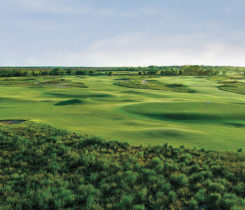
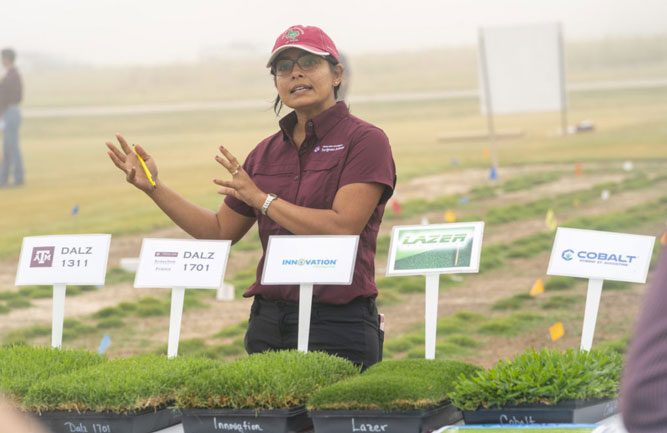


I visited Bladerunner farms not too long ago…I wasn’t looking for the best grass I had ever seen but I found it anyhow.
I met Darrin at the office when I pulled into Bladerunner Farms. You could tell within the first couple of minutes that this farm was serious about Zoysia.